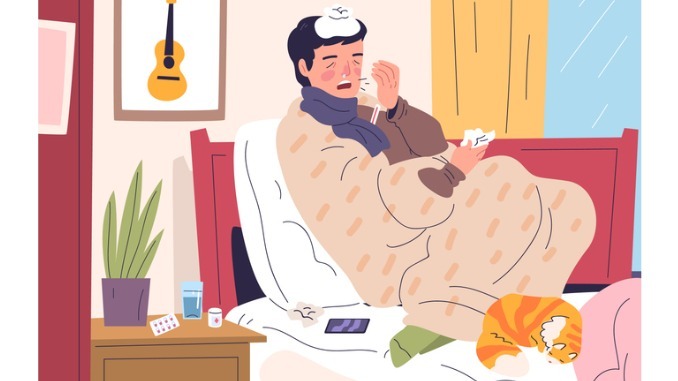
You’ve probably heard jokes about “man flu,” but is there more to it than just a cultural stereotype? In this article, we explore how it shapes the way society views men’s reactions to respiratory illnesses
CREDIT: This is an edited version of an article that originally appeared on The BMJ
Accounts of men exaggerating their symptoms during a respiratory illness are widespread, with the term “man flu” often used to describe this perceived phenomenon. Commonly, it’s portrayed as a situation where men seem to overemphasise the severity of their illness, while women are believed to carry on with their daily activities despite having similar symptoms.
But how much scientific evidence supports the idea of “man flu”? Recent studies suggest that there may be more to this phenomenon than just cultural exaggeration. Although “man flu” is not officially recognised as a medical condition, its deep-rooted cultural impact raises important questions about our understanding of men’s health and how they respond to illness.
Biological Differences
At first glance, the concept of “man flu” may seem exaggerated, but there are biological differences in how men and women respond to infections that practice managers should understand. One key factor influencing the immune response is sex hormones. For instance, oestrogen has been shown to have anti-inflammatory effects, and there is evidence suggesting that higher oestrogen levels may improve outcomes in infections like COVID-19. In general, adult females tend to have stronger adaptive and innate immune responses to viral infections compared to men.
It’s important to recognise these biological differences when supporting male patients. Understanding that men may experience more severe symptoms due to weaker immune responses can help in managing their care more effectively.
Social Perceptions
A gendered perception of illness, where it’s considered “more socially acceptable” for women to show vulnerability when ill, may contribute to the concept of “man flu.” Men are often portrayed as weak or overly sensitive for displaying symptoms of infection, which can discourage them from seeking the treatment they need. On the other hand, women are generally more likely to self-report their symptoms and seek medical advice.
As practice managers, there is a duty to encourage male patients to be open about their symptoms, particularly when it comes to respiratory illness. This includes fostering an environment where men feel comfortable discussing their health concerns, encouraging them to seek medical advice early, and providing information on the potential severity of illnesses like influenza, COVID-19, or pneumonia.
To counter the “man flu” culture, practice managers can take several proactive steps, including providing staff with training to recognise and address any gender biases, helping to remove barriers for male patients in accessing care.


Be the first to comment